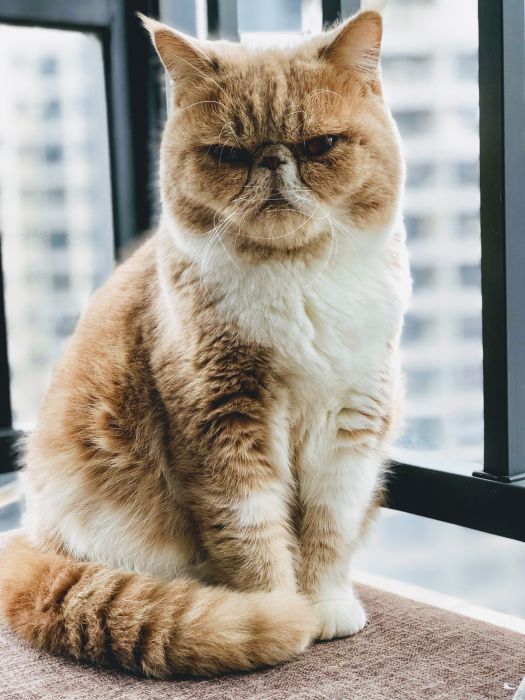
Picture this: you’re chatting with some friends and acquaintances about your job or an upcoming examination. While talking, you say something like, “It’s so hard!” You don’t even realise what you’ve said until someone in the group, quick as lightning, hits you with the rejoinder, “That’s what she said!” As you’re trying to make sense of what just happened, the group dissolves into giggles. If you’re the kind of person who is discomfited by sexual innuendo, you might blush. You may protest, “That’s not what I meant, what, no, ew, I didn’t mean that.” But it’s too late. The whole conversation has already taken a turn into the salacious, and nobody really remembers – or cares – about your original point.
That’s the power of the classic ‘that’s what she said’ joke. It can transform the most mundane comment or question into something exciting and raunchy. It can elicit gasps, laughs, or groans in the most banal conversation. The true masters of ‘that’s what she said’ are those who can turn nearly any word or phrase into a double entendre.
Why Does it feel so good?
The enduring appeal of the ‘that’s what she said’ joke lies in the way it takes something that was said with no sexual connotation and turns it into something that sounds very sexual. It’s a little like the misheard lyrics of popular songs: once you’ve discerned cuss words or funny phrases in a piece of music, there’s no coming back. Your brain will think of the misheard lyric every time you hear the song. Try it for yourself by checking out the classic animated O Fortuna misheard lyrics video. (Here’s an original version for those who want to put their heads right again!)
Once you start making connections between commonplace words and phrases and their sexual undertones, it might be difficult to turn off that voice in your head. This can be seen in other running jokes on television shows, like the “title of your sex tape” joke in the show Brooklyn 99 and the salutes between Ted and Robin on military puns on the show How I Met Your Mother. Once the characters start finding puns under a certain theme in everyday conversations and respond to them a certain way, their brains can’t seem to turn it off.
Let’s go deeper
What makes something funny? Out of the many theories about the origins and nature of humour, the theory of incongruity posits that humour can be generated by juxtaposing seemingly incompatible concepts and by overturning peoples’ expectations. As an example, a paraprosdokian is a figure of speech in which a statement has two parts, and the second part changes the meaning of the first part in an unexpected way. A classic paraprosdokian is satirist Groucho Marx’s widely quoted: “One morning I shot an elephant in my pyjamas. How he got in my pyjamas, I don’t know.” The second sentence makes the listener reframe or reinterpret the first part by presenting a very different meaning, which is often funnier than the original. This is similar to the way the ‘that’s what she said’ format works.
Saying ‘that’s what she said’ after someone says something with a potential double meaning turns the original statement into a paraprosdokian by changing its meaning.
This surprises the audience and forces them to go back and reinterpret the statement in a completely new way. When you hear a ‘that’s what she said’ joke, you are confused for a moment, and then you put it together. Going from not understanding to understanding the joke is a gratifying process. Humour is generated by this very act of successfully reinterpreting the first statement and resolving the incongruity posed by the second statement. When the listeners of a ‘that’s what she said’ joke suddenly understand the double meaning revealed by the phrase, they laugh.

What I find most interesting about the ‘that’s what she said’ joke is that it isn’t intrinsically funny. What makes it a joke is its ability to turn something else into a sex joke. So, to deliver this joke you need to add it to something said by someone else. And the more unexpected your double entendre, the better the joke lands.
But did you like it?
Humour is extremely subjective. Both the choice of making a particular joke and its reception depend entirely on the cultural context. After all, the kinds of jokes people crack and laugh at vary tremendously based on where they are, who is listening, and what is considered appropriate. Of course, some jokes are near-universally considered distasteful – think dead baby jokes, rape jokes, scatological jokes, and so on. The ‘that’s what she said’ joke is a relatively safe type of sexual joke as it uses allusion, which is often considered a higher form of wit than just crass or graphic words and imagery. Layering one’s explicit message in a pun or euphemism helps one avoid any appearance of impropriety. Since the audience isn’t being subjected to anything overtly sexual and hence possibly offensive, this type of joke tends to be more socially acceptable than explicit jokes.
Let’s take an example. The ‘that’s what she said’ approach would report a character exclaiming that “it” was “too big”. What was too big? What does “too big” mean? What does “it” imply? These things are left unsaid. But in this format, a penis joke can be made without even using the word penis. The most common ‘that’s what she said’ jokes rely heavily on popular slang and euphemisms for sexual terms such as tight, wet, hard, come, position, blow, ride, and so on.
The first time is always special
In the 2000s, the ‘that’s what she said’ joke was popularised by the problematic and popular American sitcom The Office. It made its first appearance in the second episode of the second season ‘Sexual Harassment’, which aired in September 2005, and became a running joke used by several characters over the course of the show. Most uses of the joke on the show are deeply problematic, and many can be considered workplace harassment as they are often used by men in positions of power to demean their female colleagues. Male characters typically crack the joke on women and revel in their discomfort. For example, when Pam, the receptionist, tells him that her mother’s coming, her boss Michael Scott gleefully cracks the ‘that’s what she said’ joke and is oblivious to the unease he causes Pam.
It can be argued that in The Office, the ‘that’s what she said’ joke format is little more than a clever device used by the characters to get away with misogyny disguised as humour. By hiding their suggestive, lewd comments about women and their obsession with sex behind this joke, they conveniently absolve themselves of the responsibility of perpetuating offensive stereotypes about women. And by claiming to be funny, they try to get away with saying sexually charged things in the workplace to a non-consenting audience. As a 2013 research paper puts it, “Though the show’s satire does effectively ridicule facets of patriarchal authority and hegemonic masculinity in the American workplace… the lack of repercussions for offending characters and stereotypical portrayals of women in the workplace undercut the The Office’s transgressive potential.”
The ‘that’s what she said’ joke format predates The Office by several decades. The first-ever ‘that’s what she said’ joke with this exact phrasing appeared in the Saturday Night Live spin-off film Wayne’s World in a 1992 episode. Interestingly, a version of the joke is also found in Hitchcock’s 1929 film Blackmail. That’s not all – the joke format goes back even further to the early 19th century, when it was structured as an exchange between an actress and a bishop. Though even Hitchcock’s version of the joke specifies the characters as a girl speaking to a soldier, its 21st-century avatar has no characters at all, simply a mysterious “she” who seems to say a lot of things. The use of a woman character in a sexual manner in this joke format has led to a lot of debate about whether it is inherently a sexist trope. In a 2017 essay, two researchers argued that “the popular joke, ‘that’s what she said’ is a symbolic representation of rape that contributes to and insulates rape culture.”
And it’s true to an extent – this joke can be abused in real life much like in The Office, with people, often men, falling over themselves to make the joke without much concern for how it will be received. Sexual humour can be dehumanising and distancing in a variety of contexts: if there’s a significant power difference between the speaker and the listener, if the listener has not consented to it, if it is used to punch down instead of up, and so on. Unfortunately, the overuse of ‘that’s what she said’ has made it, at least in some circles, a nuisance. Men use it to act cool to impress women, teenagers use it to be shocking, adults use it just for the heck of it, and know-it-alls looking to hijack someone’s point with a witticism use it just to look smart.

Nevertheless, the joke became extremely common in the 2000s before it fell out of fashion in some sense. By 2010, GQ was advising readers to drop the ‘that’s what she said’ joke, and a 2014 article in The Atlantic, tracing the joke’s rise and fall, called it the “best bad joke”. It’s plain to see how easily this joke format can become a terrible one if overused or used incorrectly.
If you’re going to do it, please be gentle
Though it’s still going strong, at least in 2020s India, the ‘that’s what she said’ joke is not without its perils. After all, sexual jokes, whether implicit or explicit, always carry risks. This one can be seen as distasteful, juvenile, or even boring if one goes for low-hanging fruit. And what happens when you use a reference that your audience does not quite understand? Do you fill the awkward silence with an explanation of your joke? Do you hastily change the subject?
If you crack a not-very-obvious kind of suggestive joke, it will likely leave some people smiling knowingly and others looking lost. In this way, the joke signals being “in the know”. This makes it a great ice-breaking tool. Sociologists and psychologists agree that humour serves the function of strengthening the bonds between those who laugh together.
At my last job, I was hired around the same time as several others, and so most of my colleagues and I were new to the workplace. I remember how some of us bonded quickly over a week of intense ‘that’s what she said’ jokes. It was impossible to get through a single conversation without encountering at least one ‘that’s’ what she said’ joke, which would cause everyone to burst into laughter and come out of work mode for a few moments. At times, one joke would set off an avalanche of sexually suggestive statements in rapid repartee. The sheer delight of saying something salacious and having others appreciate it and respond accordingly cemented our friendship. Of course, this was done with full consent and in small groups in which everyone participated in cracking jokes.
In a sexually repressed society like ours, ‘that’s what she said’ jokes allow people to talk about sex in an indirect way. This can be quite useful, especially when you’re trying to figure out where the line really is in terms of acceptability. You can use this joke format to check how far you’re allowed to go when talking about sex, and you can do so without worrying about offending anyone as you’re using allusion instead of explicit imagery. Just observing others’ reactions to this joke can indicate what is acceptable in your group or setting. Being able to test the waters in this manner can make it easier for people to discuss these topics more openly in the future. As scholar Joseph Boskin put it in his book Rebellious Laughter, a joke type “contains and reveals people’s feelings and attitudes”. And since humour hides or disguises people’s feelings, examining it can reveal people’s true attitudes under their more traditional appearance.
We’re about to finish
Whenever a friend says ‘that’s what she said’, I smile no matter how cringe-worthy the usage is (and it is quite often, believe me). This joke is a reminder of the truth that underneath all the social protocols and modesty, many people do frequently think about sex, and many others don’t quite mind hearing about it. But it’s one thing to use this joke among consenting friends, and quite another to weaponise it to score points at the expense of others.
The use of humour is extremely gendered – scholars agree that men are conditioned to tell jokes and they feel entitled to their audience’s laughter even when making bad jokes, while women are conditioned to laugh at men’s jokes to appeal to their ego. Gender is performative, and humour is an important behavioural cue of this performance. In fact, making people laugh is a considered a sign of masculinity, and that means humour can also become a tool for toxic masculinity, male aggression, and violence. After all, thinly veiling one’s problematic ideas as jokes is a popular tactic to get away with saying offensive things that perpetuate oppression. This explains why jokes are often used as a tool for aggression directed at women and other marginalized groups: think wife jokes, sexist WhatsApp forwards, and so on.
Like any other popular joke format that relies on puns, the “that’s what she said” joke can be wielded to hijack the conversation and make others uncomfortable. When you crack this joke without the consent of your audience, you are in danger of them seeing your joke, and by extension, you, as presumptive, sexist, unprofessional, immature, attention seeking, and even creepy. And they won’t be wrong to think that. We don’t need to imagine what would happen if a male boss were to use sexual humour, including ‘that’s what she said’ jokes, to a captive audience of his younger and significantly junior women colleagues, who felt unable to say anything to stop him–it plays out several times in the show The Office, which popularised the joke and remains a fan favourite. It cannot be excused as just “locker room talk” or “men being men” or “a harmless joke”.
As with most things, the ‘that’s what she said joke’ must be used mindfully. Don’t just focus on your own pleasure. Think about others too. Ooooh, that’s what she said.
Cover Image: Image by Mohamed Hassan from Pixabay
